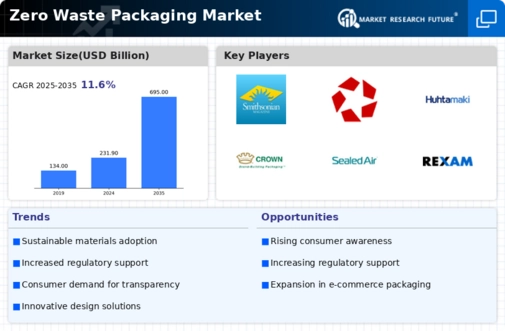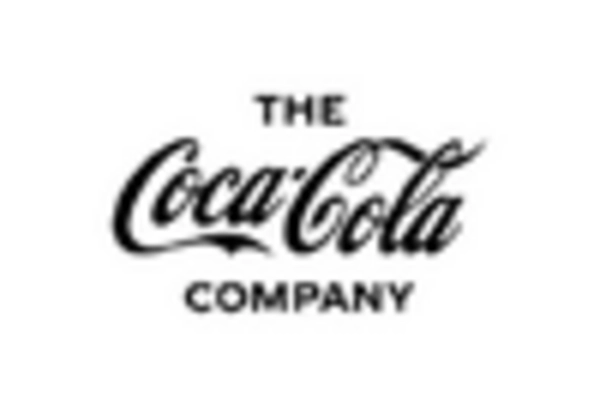Advancements in Material Science
The Zero Waste Packaging Market is benefiting from significant advancements in material science, which are enabling the development of innovative packaging solutions. Researchers are exploring new biodegradable and compostable materials that can effectively replace traditional packaging options. These innovations not only reduce waste but also enhance the functionality and appeal of packaging. As companies adopt these cutting-edge materials, the Zero Waste Packaging Market is expected to grow, driven by the demand for sustainable alternatives that do not compromise on quality or performance. This trend indicates a promising future for eco-friendly packaging solutions.
Corporate Sustainability Initiatives
Many corporations are increasingly integrating sustainability into their business models, which is positively influencing the Zero Waste Packaging Market. Companies are recognizing that adopting zero waste packaging not only enhances their brand image but also meets the growing demand for environmentally responsible products. Reports suggest that businesses implementing sustainable packaging strategies can improve customer loyalty and attract new clientele. This shift towards corporate responsibility is likely to propel the Zero Waste Packaging Market forward, as more organizations commit to reducing their environmental impact through innovative packaging solutions.
Regulatory Support for Sustainable Practices
The Zero Waste Packaging Market is experiencing a surge in regulatory support aimed at promoting sustainable practices. Governments are increasingly implementing policies that encourage the reduction of waste and the adoption of eco-friendly packaging solutions. For instance, legislation mandating the reduction of single-use plastics is becoming more prevalent, compelling companies to explore zero waste alternatives. This regulatory environment not only fosters innovation but also creates a competitive landscape where businesses that adopt sustainable practices can thrive. As a result, the Zero Waste Packaging Market is likely to witness accelerated growth, with companies investing in research and development to meet these new standards.
Growing Environmental Awareness Among Consumers
Consumer awareness regarding environmental issues is on the rise, significantly impacting the Zero Waste Packaging Market. As individuals become more conscious of their ecological footprint, there is a marked shift towards products that utilize sustainable packaging. Surveys indicate that a substantial percentage of consumers are willing to pay a premium for products packaged in environmentally friendly materials. This trend is driving manufacturers to adopt zero waste packaging solutions, thereby enhancing their market appeal. The Zero Waste Packaging Market is thus poised for expansion, as brands that align with consumer values are likely to gain a competitive edge.
Increased Investment in Sustainable Technologies
Investment in sustainable technologies is a key driver for the Zero Waste Packaging Market. As businesses recognize the long-term benefits of adopting zero waste practices, funding for research and development in sustainable packaging solutions is increasing. This influx of capital is facilitating the creation of more efficient and effective packaging systems that minimize waste. Furthermore, partnerships between companies and research institutions are fostering innovation in the Zero Waste Packaging Market, leading to the emergence of new technologies that can revolutionize packaging processes. This trend suggests a robust future for the industry as it adapts to meet evolving consumer and regulatory demands.

















Leave a Comment